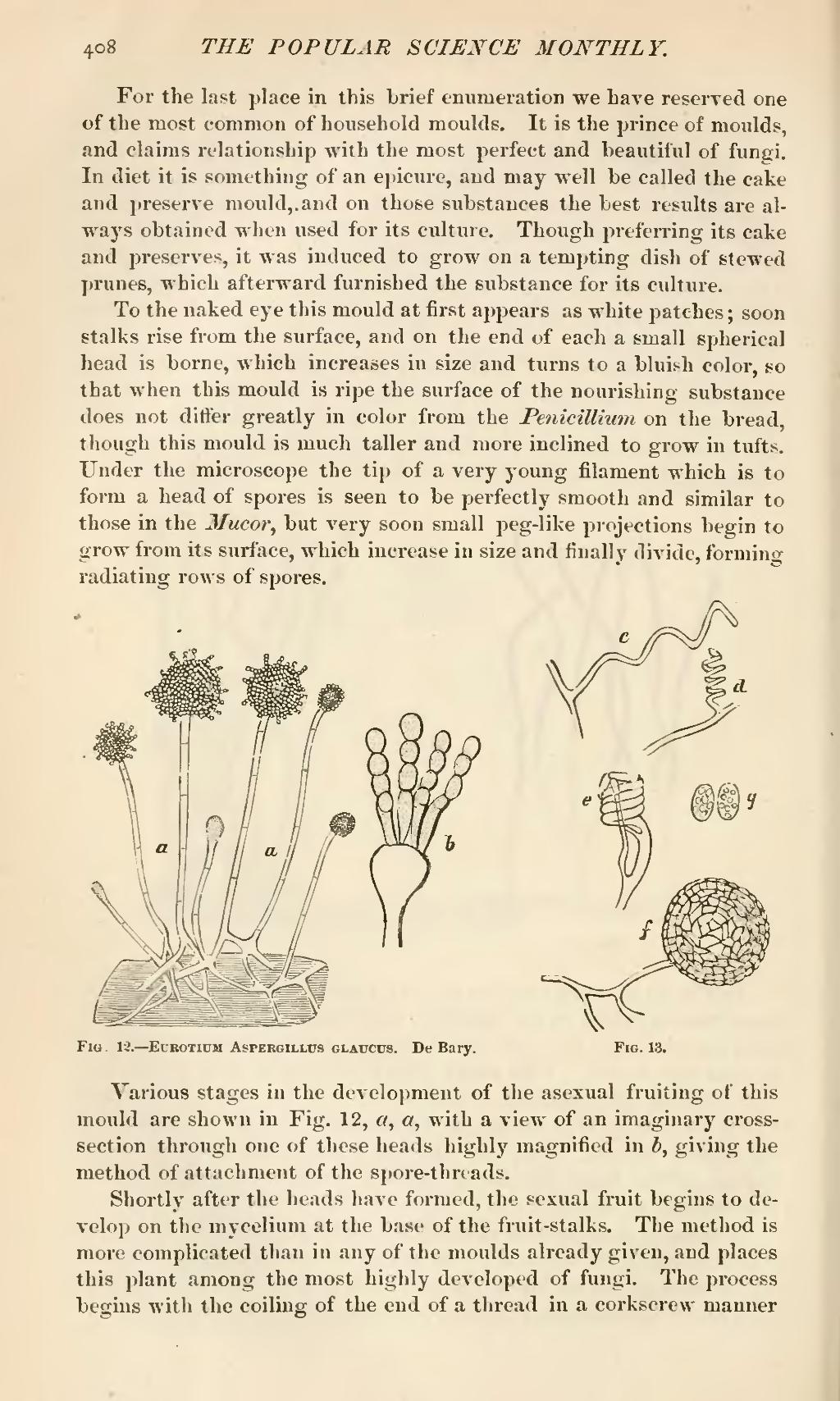For the last place in this brief enumeration we have reserved one of the most common of household moulds. It is the prince of moulds, and claims relationship with the most perfect and beautiful of fungi. In diet it is something of an epicure, and may well be called the cake and preserve mould,.and on those substances the best results are always obtained when used for its culture. Though preferring its cake and preserves, it was induced to grow on a tempting dish of stewed prunes, which afterward furnished the substance for its culture.
To the naked eye this mould at first appears as white patches; soon stalks rise from the surface, and on the end of each a small spherical head is borne, which increases in size and turns to a bluish color, so that when this mould is ripe the surface of the nourishing substance does not differ greatly in color from the Penicillium on the bread, though this mould is much taller and more inclined to grow in tufts. Under the microscope the tip of a very young filament which is to form a head of spores is seen to be perfectly smooth and similar to those in the Mucor, but very soon small peg-like projections begin to grow from its surface, which increase in size and finally divide, forming radiating rows of spores.

Fig. 12.—Eurotium Aspergillus glaucus. De Bary.Fig. 13.
Various stages in the development of the asexual fruiting of this mould are shown in Fig. 12, a, a, with a view of an imaginary cross-section through one of these heads highly magnified in b, giving the method of attachment of the spore-threads.
Shortly after the heads have formed, the sexual fruit begins to develop on the mycelium at the base of the fruit-stalks. The method is more complicated than in any of the moulds already given, and places this plant among the most highly developed of fungi. The process begins with the coiling of the end of a thread in a corkscrew manner
